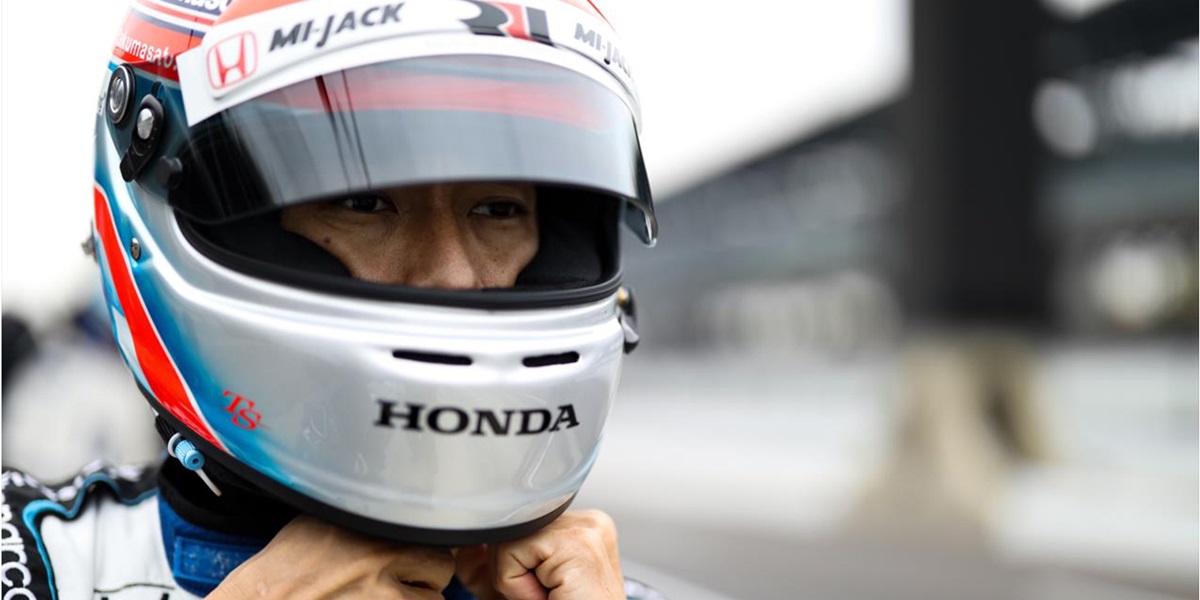
Sato Back at IMS, Where He’s Getting Better With Age
October 30, 2020 | By Curt Cavin, Indianapolis Motor Speedway
Takuma Sato returned to the Indianapolis Motor Speedway oval this week, a little more than two months after winning his second Indianapolis 500 presented by Gainbridge.
Sato’s return to The Racing Capital of the World also came just days after re-signing with Rahal Letterman Lanigan Racing for the 2021 season, and the continuation of the group -- experienced team with the two-time Indianapolis 500 champion again using Honda power -- should make the No. 30 car a strong candidate to win next year’s race, too.
The event’s last repeat winner was Helio Castroneves in 2002. The confidence Sato exudes to match that feat is clear.
“I’m as motivated as ever,” the Japanese driver said as the NTT INDYCAR SERIES prepared for Friday’s six-car test at IMS. “I’m really happy to re-sign with the team. I know how this business works and there are a lot of things behind it -- sponsorships and those types of things -- but I know (team owners) Bobby (Rahal) and Mike (Lanigan) and their commitment, and I’m obviously very happy with the team’s engineering.
“I think continuing (together) is a big plus.”
Sato’s birthday is in January, which will make him 44 when the green flag drops for the 105th Running on May 30. Only four drivers have won the “500” at an older age, most recently Emerson Fittipaldi, who was 46 when he won in 1993.
Sato strongly believes he is in the right place in his life and career to become just the 11th driver to win three “500s.”
“Mentally and physically, I feel the best ever still,” he said. “So, we’ll see. I’m a human being and at some point you are going to (decline).
“But at the Indy 500, in particular, I think experience is something that can overtake the physical part.”
Sato seems to be getting better with age, particularly at IMS. He came within three-tenths of a second of winning the 2019 race, finishing third behind Team Penske’s Simon Pagenaud and Andretti Autosport’s Alexander Rossi. Over the past four “500s,” Sato has a pair of wins, last year’s third-place finish and a crash in 2018 while trying to avoid a lapped car significantly off the pace. No other NTT INDYCAR SERIES driver has a better “500” record over that period.
Sato had another strong chance to win the “500” in 2012 when his last-lap pass for the lead held by Dario Franchitti ended with a spin into the Turn 1 wall. Given that and what’s transpired the past four years, it’s not a stretch to say Sato has been as good as any driver at IMS over the past decade. Sato has done that with three different teams.
Sato also is one of only four NTT INDYCAR SERIES drivers to have won races each of the past four seasons. The others: six-time and 2020 season champion Scott Dixon of Chip Ganassi Racing, and Team Penske drivers Josef Newgarden and Pagenaud. Those are the past three series champions.
“It is hard (to believe), yes,” Sato said of his success in recent years. “I wish we had pulled off (the Franchitti pass) in ’12, and I wish I could have put the 14 car in the winner’s circle here for A.J. (Foyt) with the opportunity he gave me, which was fantastic.
“But all of that was experience I needed to make the foundation for what I do now. Since (winning in) ’17, now I know how to win it and with this team and how (competitive) we were last year and this year, we’ve both become more confident.
“We’re really confident (about 2021).”
Despite cool conditions Wednesday, Sato and Newgarden completed the first part of INDYCAR’s test of aerodynamic configurations under consideration for next year’s equipment package.
Sato and Newgarden were joined in the Friday portion of INDYCAR’s test by fellow series drivers Dixon, Ed Carpenter of Ed Carpenter Racing, Ryan Hunter-Reay of Andretti Autosport and Pato O’Ward of Arrow McLaren SP. INDYCAR requested six drivers to simulate group-running conditions.
The 17-race NTT INDYCAR SERIES begins March 7, 2021 with the Firestone Grand Prix of St. Petersburg.